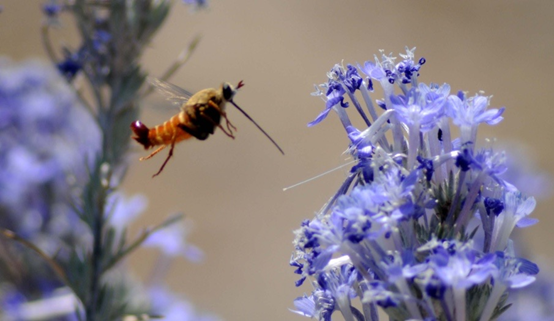Spatiotemporal variation in pollinator taxa on the santa ana river wooly star Eriastrum densifolium ssp. Sanctorum (Milliken) mason (Polemoniaceae)
DOI:
https://doi.org/10.26786/1920-7603(2020)531Abstract
Flood control, via the construction of the Seven Oaks Dam in the Santa Ana River in southern California, has altered habitat in the downstream alluvial wash community and jeopardized the persistence of pioneer plant species that rely on periodic flood-scouring and sand recharge. One species, Eriastrum densifolium ssp. sanctorum (“Eriastrum”), an endangered perennial, has been greatly affected and persists in spatially separated populations on successional vegetation terraces. We made “dawn to dusk” observations of pollinators in three phenological stages at four sites, representing young and old seral stages, to identify primary pollinators and to elicit daily, site, and seasonal patterns of visitors. Data were compared to previous observations and correlated with annual rainfall to determine long-term trends. Shifts in pollinator taxa have occurred, with some consistency through time and space, during nine years. The sites with the highest pollinator abundance (older sites) are least suited to Eriastrum. Hummingbirds (prevalent in early season) and the Acton giant flower-loving fly (prevalent in late season) have been consistently present across years, whereas other taxa have varied. A shift from native bees to non-native bees has occurred, although native bees in the families Halictidae and Apidae (Micranthophora and Melissodes) remain important. In general, there was no correlation between taxa abundance and rainfall. Eriastrum appears to be a generalist able to take advantage of the behaviour, cycling, and availability of diverse pollinators daily, seasonally, and annually.

Published
How to Cite
Issue
Section
License
Copyright (c) 2020 C. Eugene. Jones, Fern L. Hoffman, Patricia Nunes-Silva, Robert L. Allen, Axhel Munoz, Marion Erickson, Douglas Stone, Youssef Atallah

This work is licensed under a Creative Commons Attribution 4.0 International License.
JPE is an open access journal which means that all content is freely available without charge to the user or his/her institution.
Authors who publish with this journal agree to the following terms:
1) Authors retain copyright and grant the journal right of first publication with the work simultaneously licensed under a Creative Commons Attribution License that allows others to share the work with an acknowledgement of the work's authorship and initial publication in this journal.
2) Authors are able to enter into separate, additional contractual arrangements for the non-exclusive distribution of the journal's published version of the work (e.g., post it to an institutional repository or publish it in a book), with an acknowledgement of its initial publication in this journal.
3) Authors are permitted and encouraged to post their work online (e.g., in institutional repositories or on their website) prior to and during the submission process, as it can lead to productive exchanges, as well as earlier and greater citation of published work (See The Effect of Open Access).
To assure a broader targeted audience, content will be included into databases (such as EBSCO) and directories (such as DOAJ).











